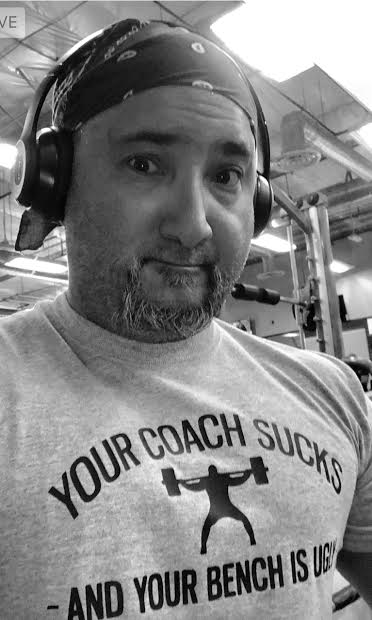“It’s not about winning the exercise,but winning the adaptation” Dr. Tyson Beach
People love setting and breaking personal records. I believe that breaking personal records can be an important, and healthy part of a training plan but also believe they are not something you should live or die by.
If anything, you’re only as good as your LAST training session, and knowing when to shut-down a session is a good thing.
I believe in the creation of mini-goals, which pave the way towards grander goals. The grander the goal the longer the training process, therefore the more mini-goals will be needed. In terms of coaching, I believe that creating an atmosphere where the individual is breaking little records on a fairly consistent basis helps keep them motivated along the path to the bigger records.
“Skill is perhaps the most important element in strength” Dr. Thomas Fahey
Not every session will have a record breaker, and to think otherwise would be unrealistic. For the beginner, the training objectives are the development of technical skill and increasing load over time. I believe the same could be said for more advanced trainees.
Beginners have the advantage of naturally being able to break records frequently due to training being a new stimulus. Eventually that well runs dry.
The teaching and development of strength requires a patient, and competent coach blessed with an eye for the job, sensible programming and sound load management.

I’ve qualified things based on technical consistency, showing where someone has improved in a given lift and load handling. Video tracking and comparison to past lifts has been used to great effects.
FACT: I knew that video tracking of lifts worked with my highest qualified lifters, and it proved helpful with lowest qualified lifters. Since it worked on both ends of the client continuum, why would it not work with those in the broad middle?
The Mini-Goals based on my definition of the term essentially means, being slightly better than before. “Slightly better” must be defined, and ideally is measurable.
In resistance training, progression towards a mini-goal can occur in one of several ways (1) Adding load to a fixed rep and set scheme (2) Maintaining a load while increasing the reps or (3) Maintaining a load and reps, but adding sets being the most common.
Slightly less common would be load jumping across the sets, using a 5×5 set/rep scheme as follows
Set 1 1×5 30# Set 2 1×5 35# Set 3-5 1×5 40# Total training volume 925#
The next session this 5×5 scheme could be changed as follows
Sets 1-2 1×5 35# Sets 3-5 1×5 40# Total training volume 950#
From here you can increase the load to 45# on a set, or increase the early sets to 40#.
But what if the client is having a bad training day? (35# is feeling a lot heavier than normal)
Bad days happen to everyone, and they are not the end of the world. One option is the alter the variables. For example, if the 35# was not happening, try the 25#’s.
25# 5×8 Total volume 1000#...an increase over the previous sessions total training volume, and possibly done in less time due to the lower load.
But what about more advanced and experienced lifters? Competitive athletes can be an exception and certainly not the norm. My tracking of their records is more in-depth, and is partly based on their qualification level, amount of time I have to work with them and their personality.
Qualification level: Higher qualified lifters typically break records at a far lower frequency.
Time: How long since the last competition, and how long until the next? Does the time allow sufficient time to peak the athletes performance measures? In the case of strength sports, is the lifter in the lighter or heavier weight classes?
Personality: Extroverts can benefit from greater diversity in their training while Introverts can benefit from less. This increases/decreases the variety of record tracking and has to be balanced against the amount of time I have with them.
Those are just three of my considerations, I assure you that there are other considerations, and some show up during individual sessions just like anyone else.
Real world example: World Qualified Masters Raw Powerlifter (Bench Press), 82kg class with a 78kg walk-around weight. Extroverted, strength level is well-above intermediate level. Competes only in World Qualifiers (2nd-3rd week of February) and Worlds (2nd week of November.)
Qualification Level: At this level the lifters technical skill, form and style should be well established. Check it anyhow, look for that something that can be improved.
Qualification Level: Will the lifter be in the same age-group at next qualifier competition? If yes, are they competitive within the division at their current weight?
Qualification Level: Has the lifter changed weight class? Does the lifter have problems gaining, losing or holding onto weight, or will they compete at walk-in weight?
Time: Due to the time between events there is ample time to fully prepare the lifter to beat previous competition numbers.
Time: Lighter lifters typically peak faster than heavier lifters and older lifters peak slower than same weight class younger counterparts. Factor these things into the athletes periodization based on where they currently stand.
Personality: More qualified older lifters don’t automatically have a better sense of reality. Extroverted nature, but trains in a very focused manner. Approaches lifts unemotionally and digests training data. Can be easily agitated.
Initial plan based on the above data.
Periodization: The lifter should break a PR in a more difficult Bench Press variation 5-7 days before competition.
Programming: Present the lifter with a range of training PR’s to aim for in biomechanically similar lifts. Intelligent variation for lifter safety, stimulus for his extroverted nature and additional training data to indicate progression is occurring,consider these as mini-goals.
Program supplemental and accessory lifts to develop the lifters weak areas. Base these choices off observation of the individual lifting 85%+ 1RM loads under competition rules and screening data.
Mental: RPE 8-9 level with routine waves in lower RPE’s. Never miss a rep! Leave the gym with a win knowing “5 more pounds was there” and leave the competition platform knowing there was nothing more to give.
Tempo: Alternate training pauses between longer and shorter than competition.
The lifter has a calm nature and the intent here is to introduce a new stress. In competition you cannot control the speed in which the head judge will call for the press command, replicating this in training can be of benefit. Do not over-do this.
Volume: Set maxes across rep ranges (2,3,4,5 etc) with last rep velocity as an indicator. This will create a natural need to wave loads over time. At this lifters skill level and age, plan for a 3-4 week microcycle with room for expansion some lifts.
Variations: Floor Press (often less range of motion, has arch limitations and offers no leg drive, Cambered Bar Press (Greater range of motion), Pin Press from weak range, Incline Bench Press. These lifts provide 4 or more new records. I would advice the Incline Bench Press be limited to a 3RM for safety concerns
Combined with volume variations this creates 20 or more possible records
Floor Press 1/2/3/4/5RM
Camber 1/2/3/4/5RM
Incline 1/2/3/4/5RM
Pin Press 1/2/3/4/5RM…and can also be set off multiple pins.
..add 3 potential grip widths
(Competition,Wide and Close Grips)
for more than 60 possible records.
..add 2 pause types and you’re now past 120 possible records.
This doesn’t account for some of the other possibilities…
Different Incline Bench Angles,Other Bars,Board Presses, Paused Presses,Assisted Lifts.
Rotate the appropriate stimulus at the appropriate time for the appropriate reason(s).






